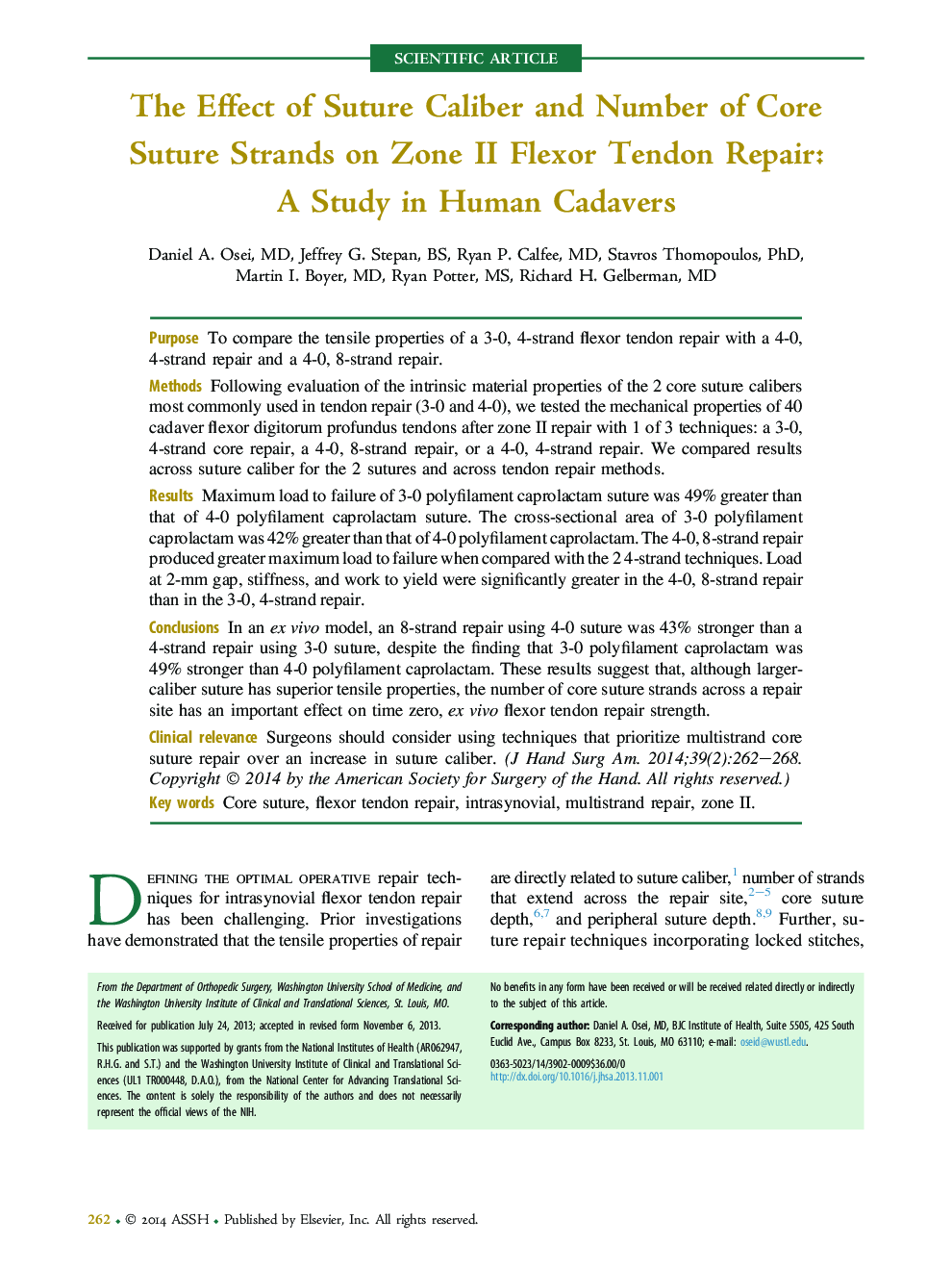| Article ID | Journal | Published Year | Pages | File Type |
|---|---|---|---|---|
| 4068349 | The Journal of Hand Surgery | 2014 | 7 Pages |
PurposeTo compare the tensile properties of a 3-0, 4-strand flexor tendon repair with a 4-0, 4-strand repair and a 4-0, 8-strand repair.MethodsFollowing evaluation of the intrinsic material properties of the 2 core suture calibers most commonly used in tendon repair (3-0 and 4-0), we tested the mechanical properties of 40 cadaver flexor digitorum profundus tendons after zone II repair with 1 of 3 techniques: a 3-0, 4-strand core repair, a 4-0, 8-strand repair, or a 4-0, 4-strand repair. We compared results across suture caliber for the 2 sutures and across tendon repair methods.ResultsMaximum load to failure of 3-0 polyfilament caprolactam suture was 49% greater than that of 4-0 polyfilament caprolactam suture. The cross-sectional area of 3-0 polyfilament caprolactam was 42% greater than that of 4-0 polyfilament caprolactam. The 4-0, 8-strand repair produced greater maximum load to failure when compared with the 2 4-strand techniques. Load at 2-mm gap, stiffness, and work to yield were significantly greater in the 4-0, 8-strand repair than in the 3-0, 4-strand repair.ConclusionsIn an ex vivo model, an 8-strand repair using 4-0 suture was 43% stronger than a 4-strand repair using 3-0 suture, despite the finding that 3-0 polyfilament caprolactam was 49% stronger than 4-0 polyfilament caprolactam. These results suggest that, although larger-caliber suture has superior tensile properties, the number of core suture strands across a repair site has an important effect on time zero, ex vivo flexor tendon repair strength.Clinical relevanceSurgeons should consider using techniques that prioritize multistrand core suture repair over an increase in suture caliber.
